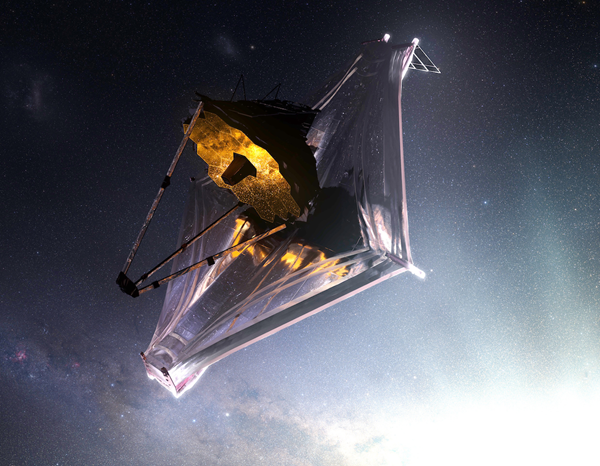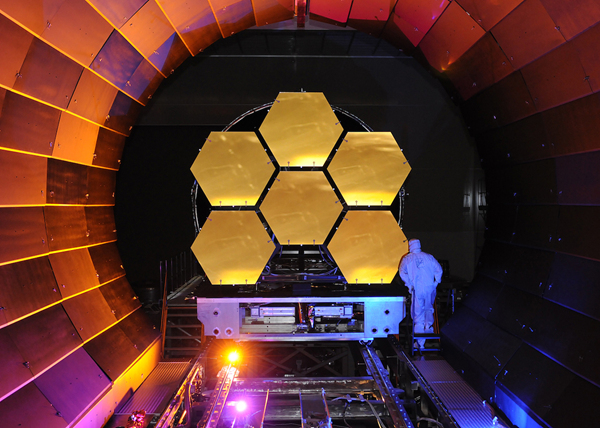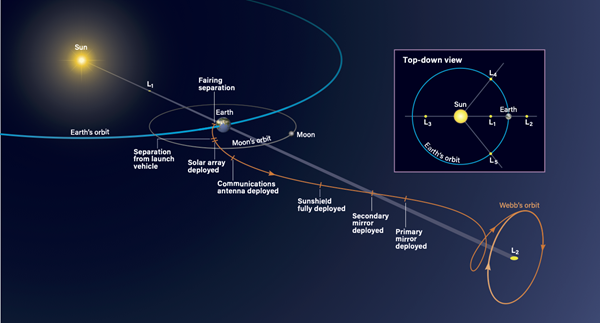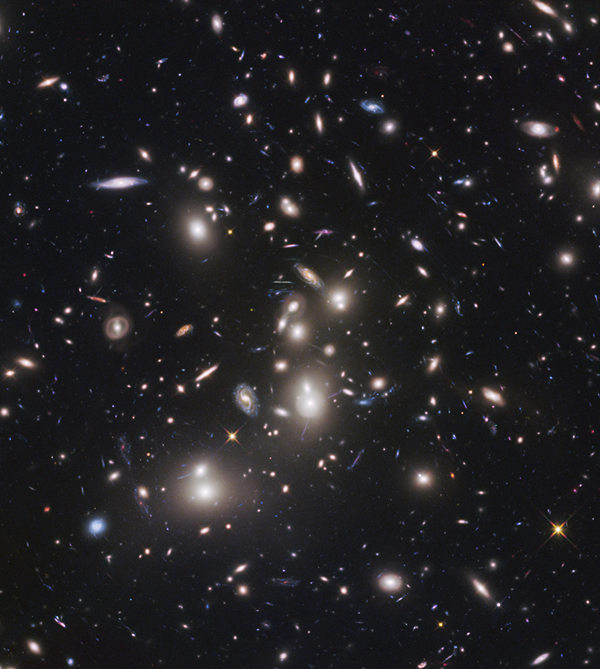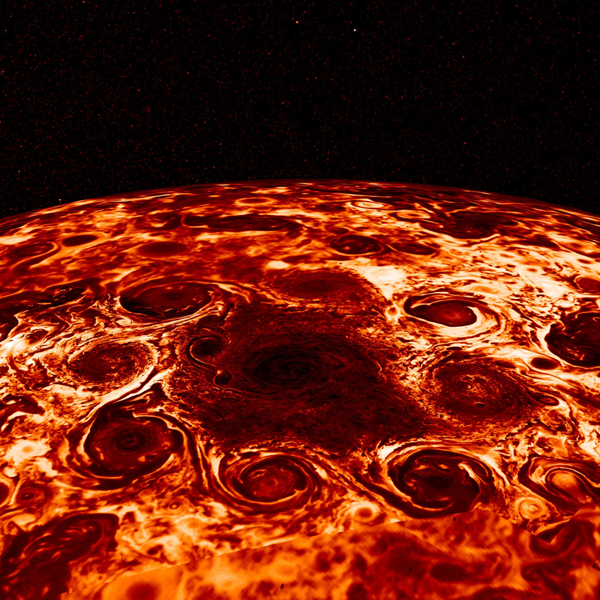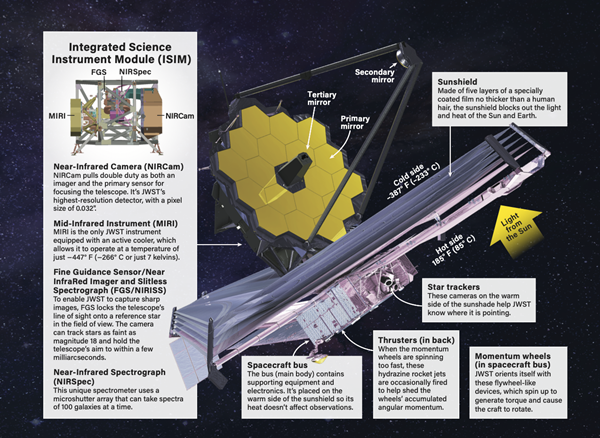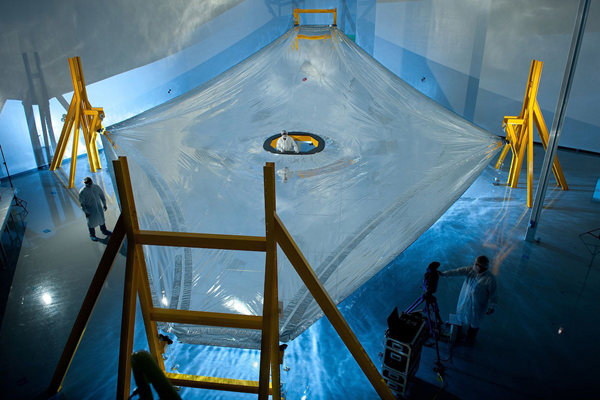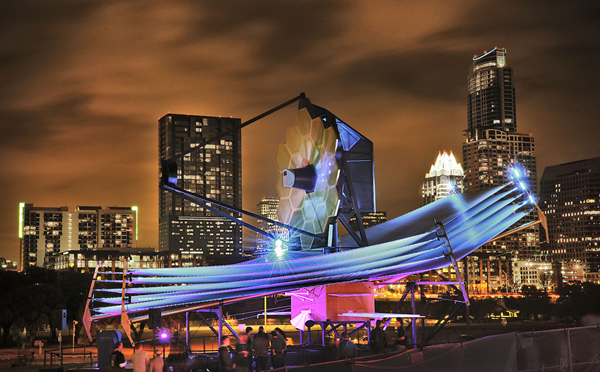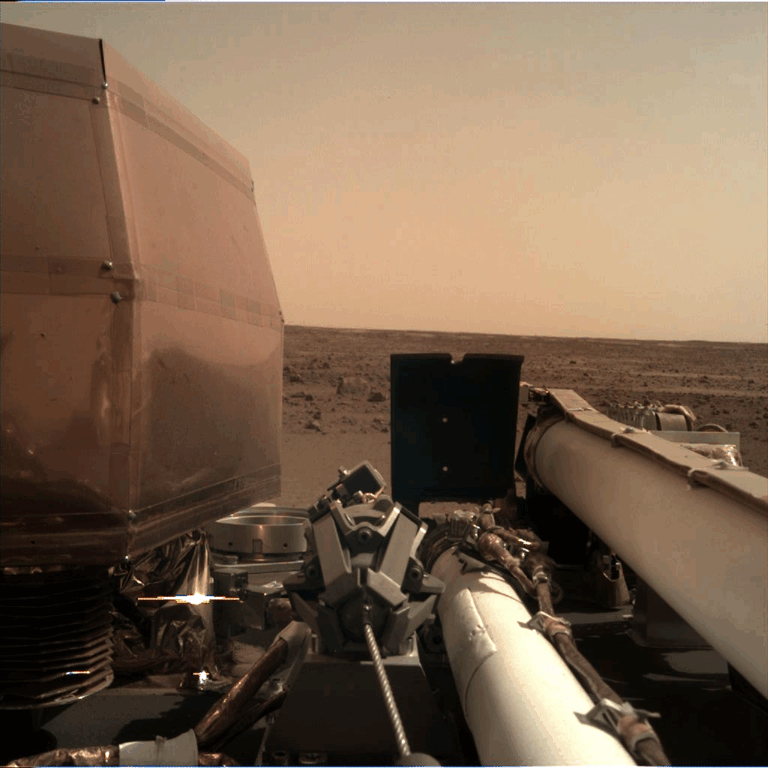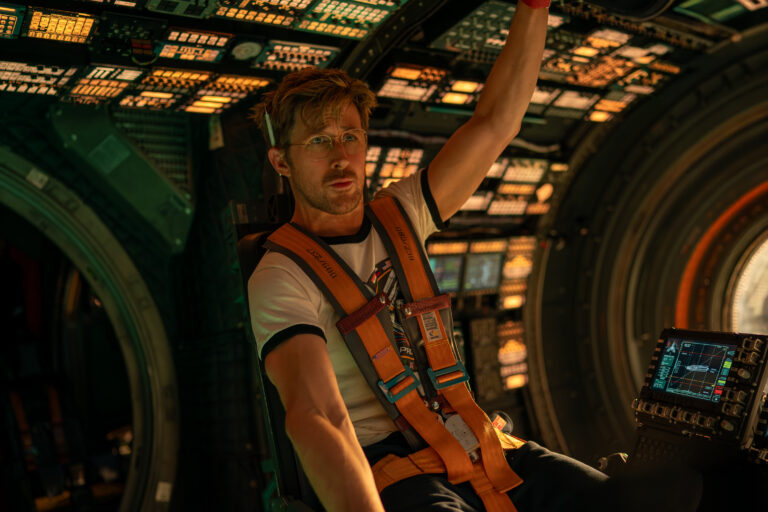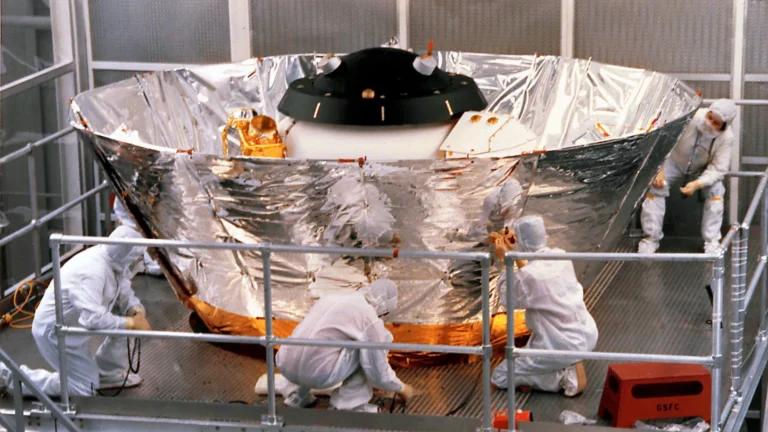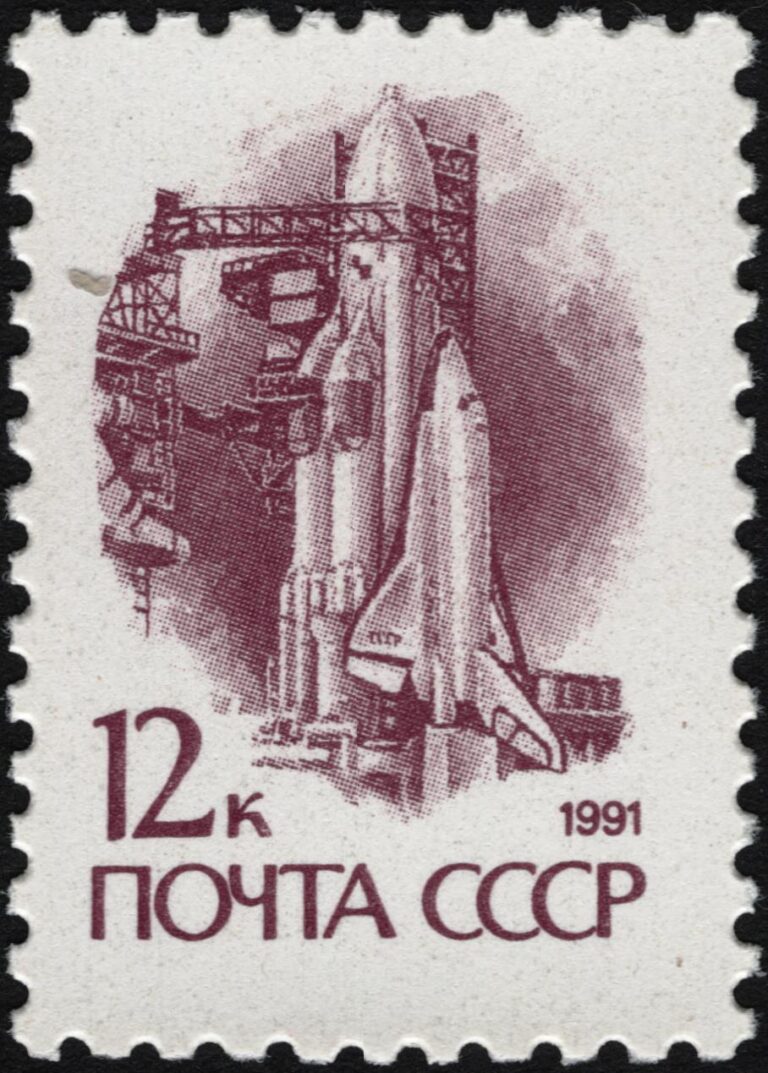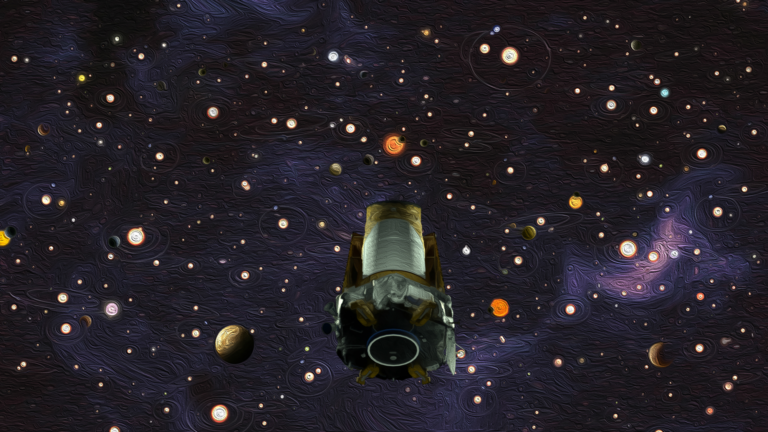Key Takeaways:
The James Webb Space Telescope (JWST), set to launch as soon as November, will attempt to answer these questions — and the ones we don’t even know to ask yet. It will crack open the treasure chest of the magnificent infrared sky, invisible to human eyes. With its great golden 6.5-meter primary mirror and its suite of cameras and spectrometers, the Webb can sense light ranging from the middle of the visible spectrum to the mid-infrared. If there were a bumblebee hovering in space at the distance of the Moon, the Webb could see both the sunlight it reflects and the heat that it emits.
As the telescope’s senior project scientist, I’ve been working with the JWST team since we started in 1995. Our discoveries will be released as they are for the Hubble Space Telescope (HST) — some immediately, some after more detailed analysis — and everyone will be able to download our images. We know where we will look, we can guess what we will find, and there will be surprises.
We will look back in time by looking far away to hunt for the first galaxies, the first stars, the first supernovae, and the first black holes. Having grown from the pure hydrogen and helium available in the early universe, these objects were very different from today’s modern examples.
We will measure the effects of dark matter and dark energy, even though we can’t see them. We will learn how galaxies grow by comparing young and old. We will watch new stars being born, looking inside the dusty clouds of gas, like the so-called Pillars of Creation, where they grow.
And we will ask how our solar system formed and how it evolved to support life. We will do this by looking at the planets and small bodies close to home, and by watching other solar systems. The infinite universe surely has life elsewhere, but where are the neighbors? If there are nearby exoplanets with liquid water, the JWST can find them.
Bigger and better
Even before the Hubble telescope was launched, astronomers met to consider its successor. In 1995, they produced a report titled “HST and Beyond,” outlining the community’s next steps. It proposed the concept and scientific requirements of what would become the JWST, and called for investment in the technology required to hunt for exoplanets similar to Earth.
Today, the Webb represents the culmination of a 25-year effort led by NASA with major contributions from the European and Canadian space agencies and a consortium of 14 European laboratories. The Space Telescope Science Institute (STScI) will operate Webb from Baltimore, where we are currently rehearsing every detail of the flight mission. Many thousands of engineers, scientists, technicians, managers, planners, accountants, and secretaries were on the teams that built it.
Hubble is sensitive to a small portion of the infrared spectrum. But despite being in space, it is warm enough to glow at infrared wavelengths, which interferes with infrared observations.
Webb is not just a bigger version of Hubble: It will be kept cold, so it does not emit infrared radiation. That means that, unlike Hubble, the telescope cannot be enclosed — it must be open to space with its components exposed so it can maintain a low temperature without an active cooling system.
It also means the Webb cannot stay in low Earth orbit. Earth radiates heat that warms nearby satellites, and we could not find a design that would keep the Webb cold there. Instead, we will push the telescope out near the Sun-Earth L2 Lagrange point, which you can find by extending the line from the Sun to Earth 930,000 miles (1.5 million kilometers) farther. At this location, the combined gravity of the Sun and Earth will keep the Webb in an orbit around the L2 point. This is the nearest place to Earth where a single umbrella (called a sunshade) can protect the telescope from the heat of the Sun, Earth, and the Moon.
The JWST also must be much larger than Hubble because the targets it will observe are faint and far away. The Webb is so large that it must be folded up for launch, and even then, it barely fits inside the fairing of the Ariane 5 rocket. To allow for folding, the 6.5-meter-wide primary mirror had to be made of 18 smaller hexagons, which, once in place, will function as though they were one unit.
The whole package
JWST’s instrument suite covers the whole infrared wavelength range — from 0.6 to 28.8 microns — with imaging cameras, spectrometers, and a fine-guidance camera. All the instruments are passively cooled to −387 degrees Fahrenheit (−233 degrees Celsius, or 40 kelvins). The exception is the Mid InfraRed Instrument (MIRI), a camera and spectrograph that requires active cooling to −447 F (−266 C, or 7 kelvins).
The Webb’s Near Infrared Spectrometer (NIRSpec) can take spectra of 100 galaxies at a time by using tiny shutters that only let in the light from target objects and block everything else. Spectroscopy breaks light apart into its full spectrum like a prism, allowing us to identify different elements absorbing or emitting light at various wavelengths. From these spectral signatures, we can determine the chemical composition, the temperatures, and the motions of these targets. Spectroscopy puts the “fizz” in astrophysics.
All of the JWST’s detectors are designed to be more resilient than Hubble’s. When Hubble’s detectors read out an image, they must transfer each pixel’s accumulated charge down to the amplifiers at the bottom of the sensor to be read, line by line. But the sensor’s ability to process charge degrades over time. On the JWST, the detectors avoid this by reading out every pixel individually.
Bringing Webb online
If all goes to schedule, around 7 a.m. EST one morning in late November, the Ariane 5 launch vehicle will lift off from Kourou in French Guiana, located near the equator in South America, setting Webb on a trajectory for L2. Soon after launch and while en route to L2, the telescope will unfold its antenna and solar arrays and start communicating with us in the control center in Baltimore.
Then, Ball Aerospace in Colorado mounted the mirrors and began a series of optical tests. These continued in Alabama at NASA’s Marshall Space Flight Center (MSFC), where Ball used a cryogenic vacuum chamber to measure the tiny distortions the mirrors will experience in the coldness of space. After post-processing back in Colorado, the mirrors received their final polishing in California — performed precisely, to correct for the measured cryo-distortion. After another stop in Colorado to be cleaned, the mirrors were sent to New Jersey to be coated with gold.
After Ball remounted the mirrors in Colorado and carried out more cryogenic checks at MSFC, the finished mirrors traveled to NASA’s Goddard Space Flight Center in Maryland, where the telescope was assembled. More cryogenic tests to the entire telescope were performed at NASA’s Johnson Space Center in Houston. Then, the telescope was shipped to California, where Northrop Grumman completed final assembly, attaching the telescope to the sunshade and spacecraft. — Mark Zastrow
Ensuring the observatory will unfold properly has required an extremely thorough test program, since we currently have no ability to visit L2 for repairs. To that end, the observatory is designed with electronic redundancy wherever possible — there are two ways to turn on every motor or to set off the release mechanisms that hold everything in place for launch.
After unfolding the telescope, we must focus it by precisely positioning each of the 18 hexagonal mirrors so they can work as one. The focusing algorithm was originally developed by Hubble scientists and engineers to correct that telescope’s optics when it was launched out of focus; from lemons we made lemonade.
After all 18 hexagonal primary mirror segments and the secondary mirror are properly aligned, the telescope will be diffraction-limited at wavelengths of 2 microns and longer, meaning images at those wavelengths will be the sharpest that classical physics allows. If we are fortunate, the performance might be that good across an even wider range of wavelengths, but we won’t know until we reach orbit and focus the telescope.
One month after launch, Webb will be close enough to L2 to begin orbiting around it, avoiding Earth’s shadow so that solar power is always available. A week later, the telescope will have cooled enough to start focusing it. Three months after launch, all the instruments will be cold, and a month after that, focusing will be complete. Commissioning the instruments will take two more months, after which the scientific observing program will commence.
Where we’ll look
The first scientific results will come from the Early Release Science program, based on 13 proposals chosen from over 100 teams that include over 4,000 astronomers from around the world. (All astronomers everywhere were eligible to submit their ideas.)
We also have an observing program designed by the teams who built the instruments, interdisciplinary scientists chosen by NASA, and 286 teams from the research community chosen from 1,172 proposals. About 70 percent of the Webb’s observing time will be for spectroscopy. (If a picture is worth a thousand words, a spectrum is worth a thousand pictures.) In addition, 20 teams were chosen for archival research and theoretical work.
Altogether, this initial series of observations will cover a vast range of astronomical targets and subjects.
We’ll look to Proxima Centauri — itself about the size of Jupiter — with at least one planet of its own, as well as Alpha Centauri, which also might have planets. We’ll look at transiting worlds around red dwarf stars like TRAPPIST-1, and hunt for signs of planetary atmospheres.
We’ll look into the famous Deep Fields pioneered by HST to peer further back in time and see — we hope — signs of the first galaxies being born.
We’ll look through nature’s telescopes: gravitational lenses, which are clusters of galaxies whose gravitational pull magnifies the images of even more distant galaxies behind them. Some of these lenses magnify their backgrounds by a factor of 10,000, which gives us a chance to see individual stars in the early universe.
But what might we find that is completely unexpected? Dark matter, dark energy, and the black holes at the centers of most galaxies stand out as truly special, and have won their discoverers a rash of Nobel Prizes in the last decade.
I’m guessing that perhaps there were some kinds of objects formed in the early universe that have all disappeared, so we can’t find them now. Maybe there were immense stars, thousands or millions of times the mass of the Sun, but burning out and turning into black holes and flying debris. Maybe dark matter was turning directly into black holes. Or maybe these strange objects are still here, but masquerading as something else.
Or perhaps there’s something about exoplanets. Today, we know of thousands of them. We know that planets about the size and temperature of Earth are common, and maybe 20 percent of all stars have them. With the Webb, we will search these planets for evidence of water, which we suspect is a requirement for life. Searching for oxygen is harder and we probably won’t see it, but it would be a strong sign of photosynthesis.
What’s next?
Just as Webb was conceived before Hubble even left Earth’s surface, astronomers and engineers are already planning for the next generation of telescopes in space and on the ground.
The European Space Agency’s 1.2-meter Euclid telescope (with U.S.-built detectors) is scheduled to launch in 2022 and will survey much of the sky to hunt for evidence of dark matter and dark energy. NASA’s larger Nancy Grace Roman Space Telescope, with a 2.4-meter mirror (the same size as Hubble’s), is planned for launch around 2026 and will take in 100 times as much sky in one bite as Hubble.
On the ground, the 8.4-meter Vera C. Rubin Observatory and its 3-gigapixel camera will survey the whole observable sky from its location every three nights, finding millions of short-lived transient events on every sweep, like supernovae, near-Earth objects, and matter falling into black holes. (JWST is ready and able to serve as a follow-up telescope for these finds: If a new discovery needs immediate response, we can do it within two days or less.)
Even larger ground-based telescopes — the 24-meter Giant Magellan Telescope, the Thirty Meter Telescope, and the 39-meter Extremely Large Telescope — are under construction. They are perfect for spectroscopy, which requires more light than taking images, and will be capable of imaging exoplanets (though not quite as small as Earth) around nearby stars.
For the next generation of space telescopes, the astronomical community will consult the recommendations of the 2021 Decadal Survey prepared by a committee of the U.S. National Academy of Sciences. Four projects are already under study by NASA: the far-infrared Origins Space Telescope, cooled to −452 F (−269 C, or 4 kelvins); the Lynx X-ray telescope, with much better mirrors and detectors than any of its predecessors; and the Habitable Exoplanet Observatory and Large UV/Optical/IR Surveyor telescopes, operating at near-ultraviolet, visible and near-infrared wavelengths, and optimized for directly imaging exoplanets.
None will be easy to build, but all are possible. In my opinion, each project is worthy of astronomers’ time and effort. Together they could keep us fully occupied for at least half a century. Future generations will celebrate their accomplishments. More treasures await!

